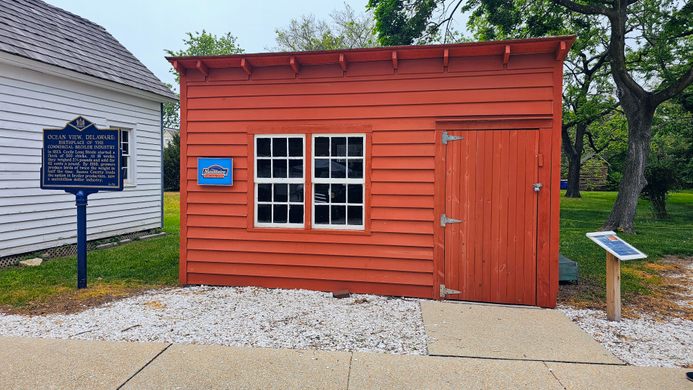It was 1923 in Ocean View, Delaware, when Cecile Steele, a humble homemaker and farmer, received a delivery that would change the course of agricultural history. Steele had ordered 50 chicks, a modest number that she could easily manage on her small farm. But when the delivery arrived, she was surprised to find 500 tiny, chirping birds instead—a tenfold increase from what she had requested.
In an era long before the convenience of modern returns and refunds, Steele faced a dilemma. What was she to do with so many chicks? Most people might have panicked or sent the shipment back. But Steele saw an opportunity. She decided to keep the chicks, raising them with care in a tiny 256-square-foot barn heated by a coal stove. It wasn’t an easy task; over 100 of the chicks didn’t survive the harsh conditions. But the 400 that did grew into healthy, two-pound birds, which she sold for a considerable profit—enough to spark a new idea in her mind.
From Mistake to Massive Success
Buoyed by her unexpected success, Steele quickly set her sights on expanding her operations. Her husband, David “Wilmer” Steele, quit his job with the Coast Guard to help her, and together they began to build a poultry business. Within just three years, they were raising 10,000 chickens, a staggering number for the time. Word of their success spread quickly through the farming community, inspiring hundreds of other farmers in the area to follow in their footsteps.
Before Steele’s accidental venture, most farmers raised chickens primarily for their eggs, slaughtering them for meat only when their egg production slowed. But Steele had stumbled upon a new model: raising chickens specifically for meat. This shift was revolutionary. The Delmarva Peninsula, where Steele’s farm was located, was an ideal spot for large-scale chicken farming, with its cheap, abundant land and proximity to major urban markets like Washington, Baltimore, and New York City.
Steele’s timing was impeccable. The Roaring ’20s were a period of immense economic growth in the United States, and with more money in their pockets, Americans were ready to eat more meat. Simultaneously, advances in agricultural practices, refrigeration, and transportation made it easier than ever to supply this growing demand.
Tragedy and Legacy
The life of Cecille Steele, however, was tragically cut short. In October 1940, she and her husband were enjoying a day on their yacht, “The Lure,” when a backfire in the carburetor caused the boat to explode. While the others on board survived, the Steele couple did not. The tragic accident claimed the lives of two pioneers who had set in motion a massive transformation in American agriculture.
Despite her untimely death, Steele’s legacy lived on. The poultry industry she helped launch continued to grow, and today, chicken is the most consumed meat in the United States, accounting for nearly half of all meat consumption. What began as a simple clerical error became a multi-billion dollar industry, and Cecile Steele became synonymous with the rise of modern chicken farming.
Today, a replica of her original chicken house stands in Ocean View, Delaware, a quiet reminder of the woman whose accidental innovation forever altered the landscape of American agriculture.




























































